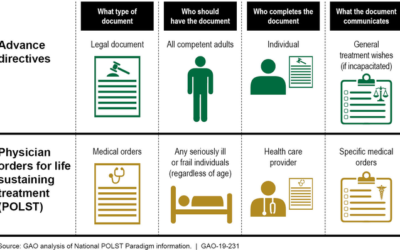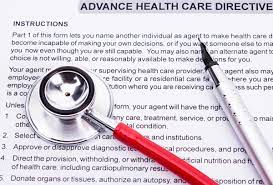IoT
Selected States’ Efforts to Educate and Address Access Challenges
In a medical emergency, do you want CPR, a feeding tube, or other life-sustaining treatment?
You can plan for what you want (or don’t want) using documents such as:
Advance directives—living wills and health care power of attorney—to document your health care wishes
Physician orders for life-sustaining treatment to document end-of-life treatment orders if you’re seriously ill
If you have these documents, doctors and emergency techs may not know they exist or be able to find them. And many people don’t have them.
Some states are educating health care providers and patients and maintaining document registries to address these issues.
Some advance planning documents, like this one for end-of-life care, are brightly colored to make them easier to identify.
Pre-Transplant Capture of Advanced Directives Increased from 28% to 69%
Clinicians and staff can work with patients and help them with advance care planning to ensure their wishes are respected. Californians report that loved one’s wishes are completely followed at the end of life only 44 percent of the time (1).
City of Hope is addressing the gap by making it easier for clinicians to document and view patients’ decisions as part of a comprehensive advance care planning initiative. As part of their Plan Today for Tomorrow initiative, City of Hope focused on the hematopoitetic stem cell transplantation (HSCT) population and incorporated obtaining advance directives into their new patient orientation and pre-transplant education classes. They also implemented a co-rounding model between palliative care and medical oncology for late-stage cancer patients and designed a standard process for verifying advance care planning documents.
To supplement their care model, City of Hope introduced Epic tools to:
Prompt clinicians to discuss code status with patients.
Help clinicians document more detailed treatment preferences and use the appropriate billing codes.
Clearly show when comfort care for actively dying patients is initiated.
In just two years, City of Hope saw the advance directive completion rate for HSCT patients increase from 28.6 percent to 69.5 percent (2). As your organization develops a care model for advance care planning, you can use Epic tools similar to City of Hope to support your program and help ensure that patients’ wishes are known and respected throughout the continuum of care, especially in their last days.
This program was designed and implemented by Finly Zachariah, M.D., Assistant Clinical Professor of Palliative Medicine and Supportive Medicine, and his team at City of Hope.
Telehealth Platform for Amazon Alexa
“We have a bold vision of the future: All care that can be digital will be digital, and all care that can be done in the home or in the community will be done in the home or in the community,” Janice Nevin, MD, MPH, CEO of the three-hospital health system, said in a press release. “Engaging patients digitally is more important than ever right now, as it will help them reach their health goals, improve their experience, and shape the future of health care as we know it.”
“Voice assistants are in millions of homes in the US,” Randy Gaboriault, ChristianaCare’s chief digital and information officer, said in the press release. “By leveraging this technology, we are creating a new model of care within patients’ homes to support the best health outcomes possible.”
RPA: The Future of Healthcare
Everybody, at one time or another, has completed repetitive and mundane tasks at work. Whether that’s inputting data into a spreadsheet, balancing accounts, or simply filling in timesheets. Inevitably, the mind wanders. You find yourself on an imaginary beach somewhere, and, before you know it, you’re asking yourself “Did I skip that row of data?”; “Why doesn’t this add up to what it should?”; “Why am I on the wrong date?”



